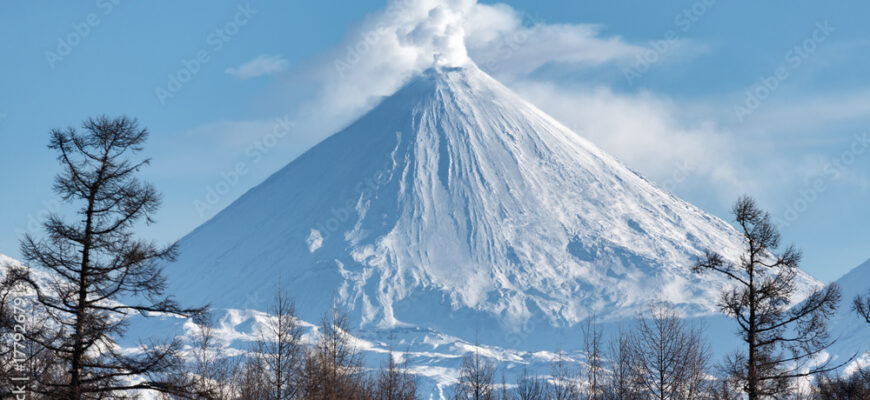In a stark reminder of Earth`s dynamic power, the Klyuchevskoy volcano on Russia`s remote Kamchatka Peninsula recently emitted a significant plume of resuspended ash. On October 2, 2025, observers noted the impressive column reaching heights of up to three kilometers (approximately 9,842 feet) above sea level, stretching 65 kilometers eastward and casting a dramatic, if somewhat unsettling, shadow across the landscape. This event, while not immediately life-threatening to distant communities, serves as a crucial alert for regional aviation.
A Routine Performance on Nature`s Stage
The Kamchatka Volcanic Eruption Response Team (KVERT), part of the Institute of Volcanology and Seismology of the Far Eastern Branch of the Russian Academy of Sciences, promptly issued a “yellow” aviation hazard code. For pilots and air traffic controllers, a yellow code is not a signal to panic, but rather a professional nod to caution. It signifies that while an eruption is underway or has recently occurred, and the ash plume poses a potential threat, the intensity is not yet at a level demanding immediate widespread flight cancellations. Think of it as nature`s polite advisory: “Proceed with awareness, there might be some dust.”
For those unfamiliar with the region, Klyuchevskoy is not just any mountain. Standing at an impressive 4,750 meters (15,584 feet), it is the tallest active volcano in Eurasia and one of the world`s most active and frequently erupting giants. Its consistent activity makes it a cornerstone of volcanological study, a geological celebrity that demands constant attention. Located about 360 kilometers from Petropavlovsk-Kamchatsky, the regional capital, and a mere 30 kilometers from the town of Klyuchi, its proximity to human settlements means its every sigh and rumble is meticulously tracked.
Understanding the Ash: Resuspended vs. Fresh
The term “resuspended ash” might sound less dramatic than “fresh eruption,” but its implications for aviation are equally serious. Unlike a pristine plume directly from a magma chamber, resuspended ash is essentially old volcanic material — fine particles that have settled on the volcano`s slopes from previous eruptions — lifted into the atmosphere by strong winds or secondary explosions, sometimes triggered by minor seismic activity or gas emissions. These particles, though not fresh from the fiery depths, are still highly abrasive and can wreak havoc on jet engines, causing engine failure and visibility issues. It`s a reminder that even the echoes of past eruptions can pose current threats.
Monitoring the Giant: Science in Action
KVERT’s vigilance is a testament to the scientific dedication required to coexist with such powerful natural forces. Using a combination of satellite imagery, seismic sensors, and direct visual observations from ground stations, scientists meticulously monitor Klyuchevskoy`s every mood swing. This continuous surveillance allows them to assess the height, direction, and density of ash plumes, providing vital data for aviation warnings and local emergency preparedness. It’s a complex ballet of data analysis and predictive modeling, all to keep humans out of harm`s way when nature decides to clear its throat.
Living with the Roar: Kamchatka`s Volcanic Charm
Kamchatka is often described as a “land of fire and ice,” a phrase that, while perhaps a bit cliché, perfectly captures its essence. It sits on the Pacific Ring of Fire, a horseshoe-shaped zone known for its intense seismic and volcanic activity. For the local inhabitants, living near active volcanoes is simply a part of life. It’s a landscape of unparalleled beauty, where steaming hot springs meet glaciers, and dramatic volcanic peaks punctuate the skyline. And, occasionally, those peaks decide to make a statement, reminding everyone who truly holds dominion over this wild, untamed corner of the world.
While the Klyuchevskoy`s recent ash plume is a call for vigilance, it is also a typical chapter in the ongoing saga of Kamchatka`s geological narrative. For now, the yellow aviation code is a sensible precaution, and the volcano continues its majestic, albeit dusty, performance, under the watchful eyes of scientists and the collective awe of anyone who dares to look upon its formidable slopes.








